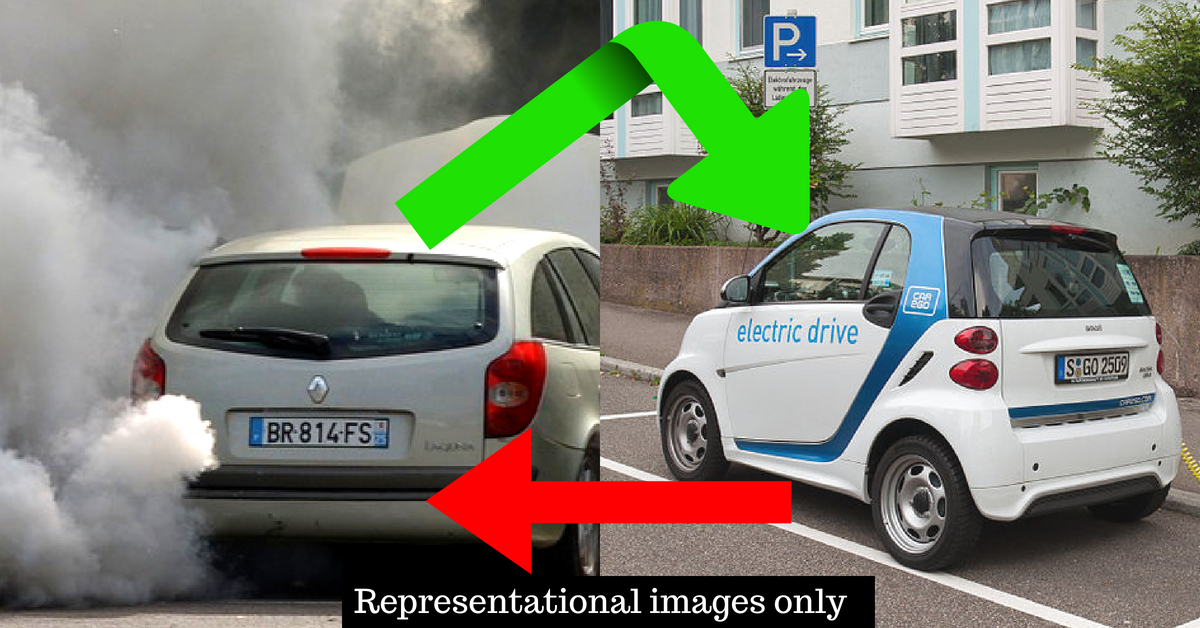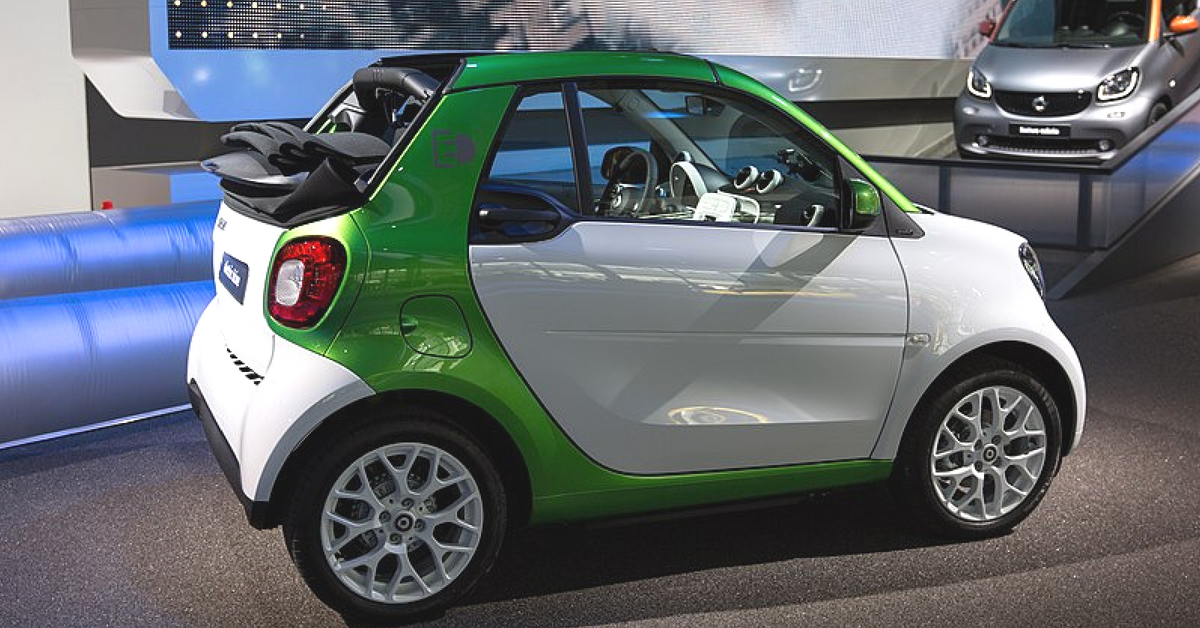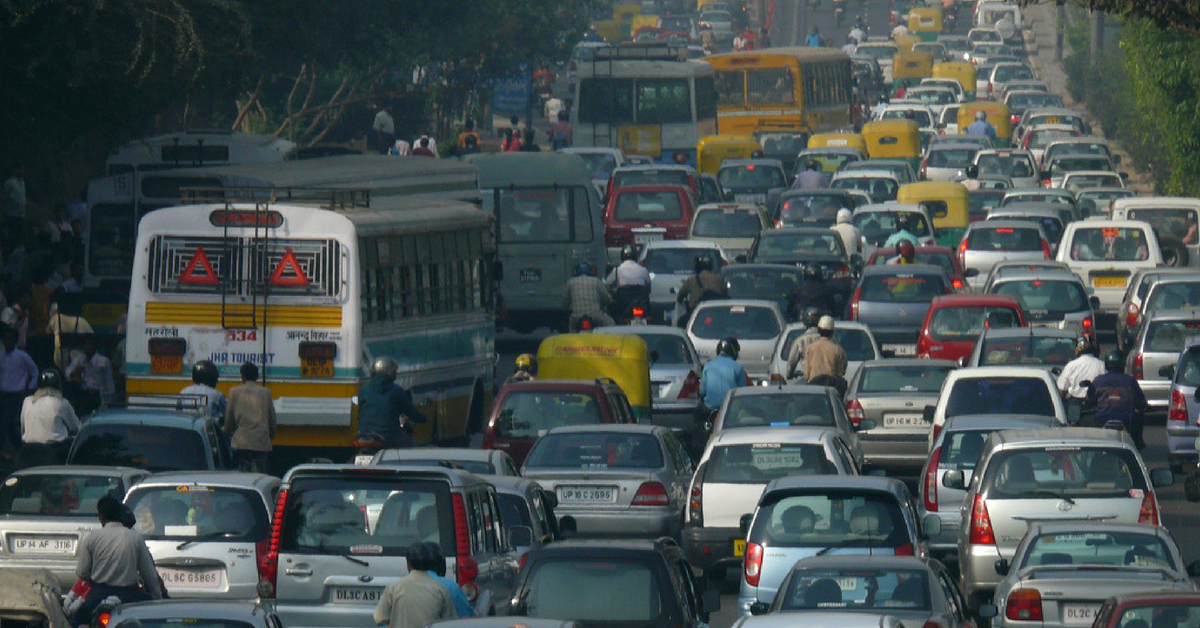Scrap Your Old Car & You May Get Upto Rs 2.5 Lakh Off On Your New Electric Car!
This scheme is a part of the government's Rs 9,400 crore package for electric and hybrid vehicles. These cars range from high-speed two-wheelers to trucks and heavy-duty vehicles.

The government wants you to go green and is encouraging the move monetarily!
India had over 210 million registered vehicles in 2015, and the number is only going up. The kind of hazard that such vehicles cause to the environment on a daily basis cannot be definitively calculated. The need of the hour when nature is facing grave threats is to switch to electric cars.
The government is now offering you incentives of up to Rs 2.5 lakhs to switch from cars running on fossil fuels to electric cars! This scheme is a part of the government’s Rs 9,400 crore package for electric and hybrid vehicles. These cars range from high-speed two-wheelers to trucks and heavy-duty vehicles.
The initiative plans to cover over five lakh electric vehicles under this scheme, for which the government aims to spend about Rs 5,800 crores. 80% of these vehicles are two and three vehicles.
Here is the low-down for the government’s offer for the switch to electric cars:

| Category of Vehicle | Maximum Factory Price (Rs) | Incentive (average) (Rs) | Max No. of Vehicles to be Benefited |
| Low-speed two-wheelers | Rs 1 lakh | Rs 20,000 | 1.5 lakh |
| High-speed two-wheelers | Rs 1.5 lakh | Rs 30,000 | 1.5 lakh |
| Low-speed three-wheelers | Rs 3 lakh | Rs 35,000 | 1 lakh |
| High-speed three-wheelers | Rs 5 lakh | Rs 75,000 | 1 lakh |
| Cars | Rs 15 lakh | Rs 2 lakh | 50,000 |
| Light commercial vehicles | Rs 10 lakh | Rs 2.5 lakh | 4,000 |
| Bus | Rs 3 crores | Rs 50 lakh | 5,000 |
| Truck/ Heavy Duty Vehicles | Rs 3 crores | Rs 50 lakh | 200 |
Along with monetary benefits, the government will also provide incentives for investments to manufacture parts in India.
Individuals will be provided with the same sops for investment on the condition that they scrap their pre-BS III vehicle and get a certificate from approved scrapping centres, confirming the same.

(BS stands for Bharat Stage as the standard of emission levels from motor vehicles. It was established by the Indian government to limit air pollutants from internal combustion engines. It was first introduced in 1991 for petrol vehicles and 1992 for diesel vehicles. BS III was rolled out in NCR and other cities to check pollution levels. It was similar to the standards laid out by most European (Euro III) and western nations between 2000 and 2005.)
The above number clearly shows that buses and cars used for commercial purposes will benefit from the scheme. Since these vehicles transport the most number of people on an average, the incentives are certainly a welcome move.
(Edited by Shruti Singhal)
Featured images for representational purposes. Sources: Pixabay/ Wikipedia.
Like this story? Or have something to share?
Write to us: [email protected]
Connect with us on Facebook and Twitter.
NEW: Click here to get positive news on WhatsApp!
If you found our stories insightful, informative, or even just enjoyable, we invite you to consider making a voluntary payment to support the work we do at The Better India. Your contribution helps us continue producing quality content that educates, inspires, and drives positive change.
Choose one of the payment options below for your contribution-
By paying for the stories you value, you directly contribute to sustaining our efforts focused on making a difference in the world. Together, let’s ensure that impactful stories continue to be told and shared, enriching lives and communities alike.
Thank you for your support. Here are some frequently asked questions you might find helpful to know why you are contributing?


This story made me
-
97
-
121
-
89
-
167













